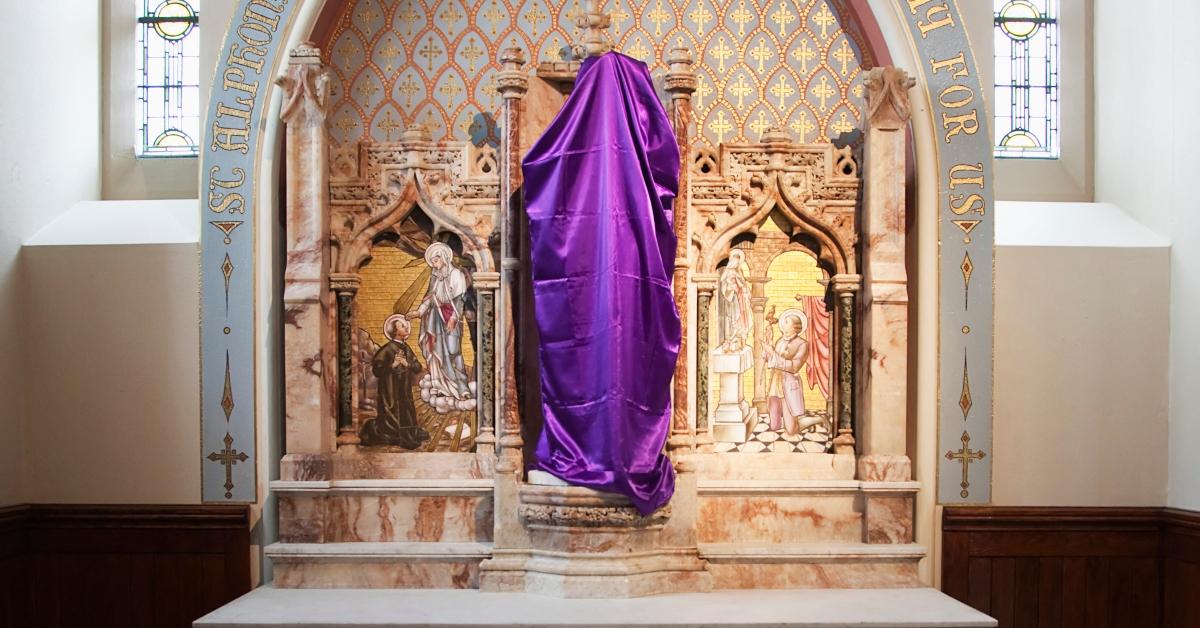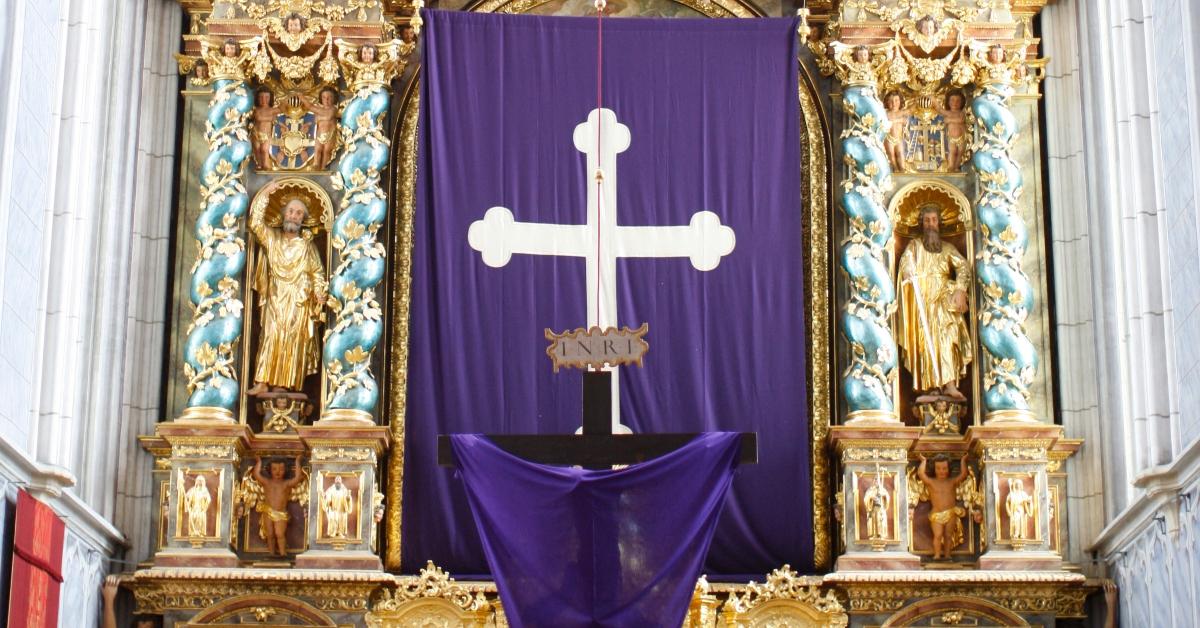Catholic Churches Spend Lent With Statues, Artwork, and Crosses Covered Up
Catholic churches have most statues, crosses, and images draped in fabric during Lent.
Published April 7 2025, 11:47 a.m. ET

While it might seem strange to cover up all of the most important religious items in a Catholic church during Lent, most devout Catholic churches tend to feature crosses, artwork, and statues covered in fabric or veils during Lent. So, why do Catholics cover statues during this time, and what is the significance of some of the colors of fabric used?
Even if you aren't religious, chances are you know a bit about Lent and its meaning with Easter and what Catholics believe to be the rebirth of Jesus Christ. Covering up religious statues and other effigies is all about honoring that belief, but it goes a bit deeper than that. And for some, it means covering statues and artwork at home too.

Why do Catholics cover statues during Lent?
According to Saint John's Seminary in Boston, Mass., covering statues, crosses, and images with a veil is important to get ready for Easter, for an unveiling to remind other Catholics that they are living in a veiled world of sorts. But in believing in Christ and following His word, they are able to have that veil lifted.
The Catholic Roman Missal book says, according to the Seminary, "In the Dioceses of the United States, the practice of covering crosses and images throughout the church from [the fifth] Sunday [of Lent] may be observed. Crosses remain covered until the end of the Celebration of the Lord's Passion on Good Friday, but images remain covered until the beginning of the Easter Vigil."

The idea behind covering statues for Lent is also for Catholics to be able to develop a heightened anticipation for Easter. Many believe their senses are heightened in the days leading up to Easter, without being able to see any of the usual images, statues, or crosses in church. On the holiday, the covers are removed.
The cross draped in purple during Lent is another important symbol.
Aside from covered statues or Catholic artwork, you might also notice outside of the church that crosses on lawns or elsewhere are covered in other ways. One common way is a purple cloth draped around a cross. This is because the color purple is meant to signify Christ as King for Catholics.
Why does Lent last 40 days?
For those who practice Catholicism, no tradition is without its deeply rooted meanings. The same goes for Lent. According to Mark 1:12-15, per the United States Conference of Catholic Bishops, "The Spirit drove Jesus out into the desert, and he remained in the desert for 40 days, tempted by Satan. He was among wild beasts, and the angels ministered to him."
Catholics practice Lent, which includes eating no meat on Ash Wednesday, Good Friday (the Friday before Easter), and, for some, every Friday during Lent. Instead, they eat fish in place of other meat. Some Catholics also use Lent to fast from vices like sugar or alcohol consumption.